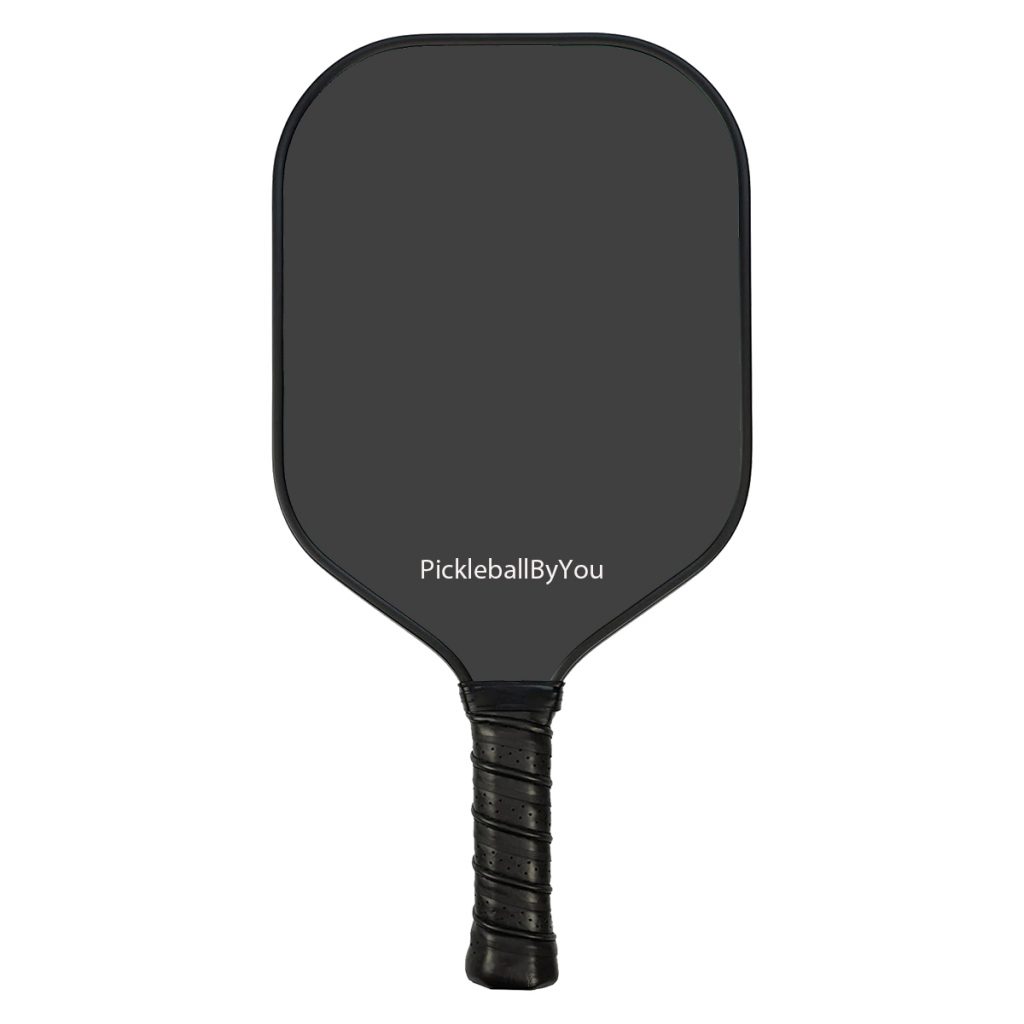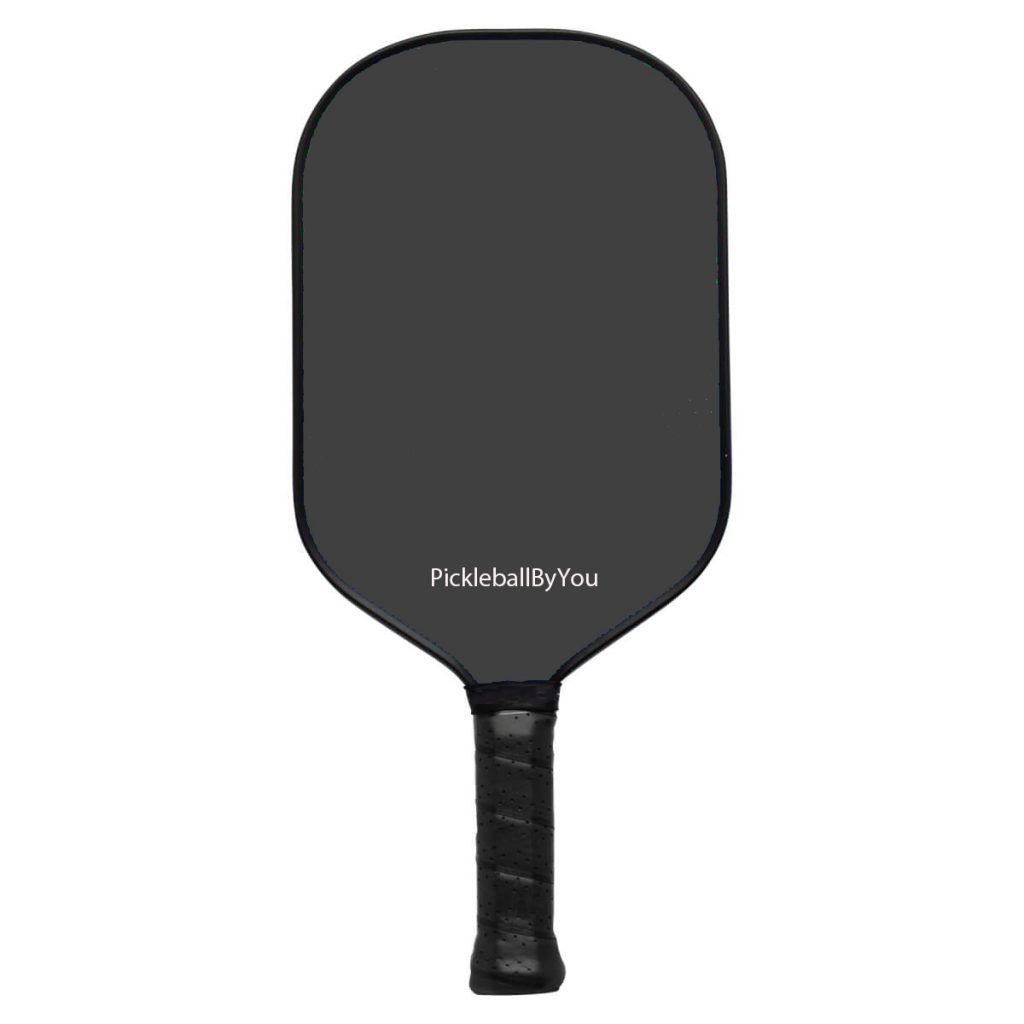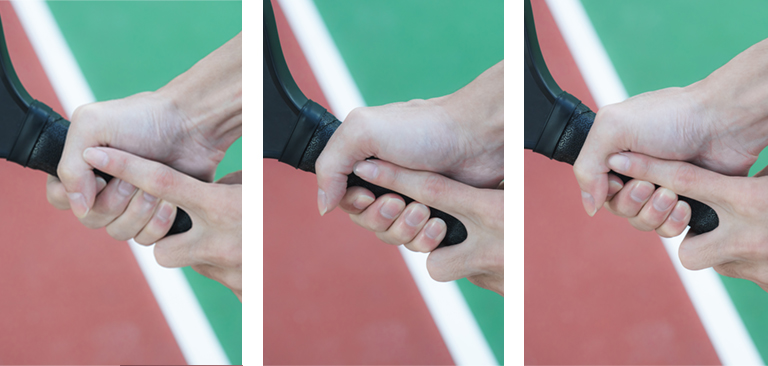Pickleball Paddle: 6 Things You Must Know When Buying
What is Pickleball Paddle (Pickleball Bat)
Pickleball Paddle is the key equipment to play Pickleball, also called pickleball rackets, pickleball bat. Usually made of wood, carbon fiber or composite materials, it looks like a combination of a tennis racket and a table tennis paddle, larger than a table tennis paddle and smaller than a tennis racket. The standard size of pickleball paddle is 16 inches long by 8 inches wide, according to standards, the total length of the handle and paddle should be less than 24 inches, and there are no specific requirements for weight and thickness. It’s obvious that it can be very individualized when selecting Pickleball Paddles. Next, I will introduce you how to pick out a pickleball paddle.
Pickleball Paddle Size
The standard pickleball paddle size is 16 inches in length and 8 inches in width, and this kind of paddle is guaranteed to be less than the standard 24 inches (the total length of the handle and paddle) in any direction. There are no standards for thickness of paddle and grip, and the requirement for paddle size is not to exceed 17 inches.
Paddle Size and Shape
The length of the paddle affects the shape of the paddle, the longer the paddle, the smaller the width and the shorter the grip. As the length of the paddle decreases, the width becomes larger and the handle becomes longer. According to the length of the paddle, it is currently divided into three shapes, Classic Shapes, Elongated Shapes and Widebody Shapes.
Reference Index of Different Shapes
Classic Shapes | Elongated Shapes | Widebody Shapes | |
Size | About 16 inches long, 8 inches wide | About 16.5 inches long, 7.5 inches wide | About 15.5 inches long, 8.5 inches wide |
Honeycomb core | Center, standard size | More forward, smaller size | Back, largest siza |
Power | Moderate | Great | Insufficient |
Control | Balance of flexibility and control | Rotation is better, sacrificing some flexibility | Better flexibility, sacrificing some receiving range |
Paddle Thickness
The thickness of the paddle refers to the thickness of the core, there is no official regulation, generally there are three kinds: 9.8mm, 13mm and 16mm. The thickness of the core will directly affect the control, power and weight of the paddle. The thicker the paddle, the more power it absorbs, the less rebound it will give the ball, the better the ball control, and it will help stabilize the paddle to reduce wobble of paddle when off-center hits happen.
If you concentrate on control and stability, a 16mm paddle is recommended, especially for beginners. For players who are more aggressive and pursue more power, it is recommended to choose a thickness of 9.8 mm. The recommendation in the middle of the two is to choose a 13mm paddle.
The Length of the Grip
The length of the grip is usually between 4.5 and 6 inches. Since the overall length of the paddle is less than 24 inches, the longer the grip, the shorter the paddle, and the corresponding honeycomb core, power and controllability will vary. The longer the handle, the higher the honeycomb core, allowing for more power and spin. The shorter the handle, the further back and larger the honeycomb core, which gives a better control of the ball. Beginners generally choose short handle pickleball paddle, and two-handed or backhand players choose long handle pickleball paddles more often.


Grip Circumference
There is no standard size for the circumference of the grip. It is selected according to the size of the hand. The circumference of the grip mainly affects the comfort of playing.
Reference Size
Height | Grip circumference of Pickleball |
Below 5’3” | 4” in circumference |
Between 5’3” and 5’8” | 4.25 inches in circumference |
Above 5’8” | 4.5” in circumference |
You can also use the index finger to test: hold the handle with your hand, the appropriate size: the distance between the finger and the palm is the same as the width of the index finger, too close means the size is too small, too far means the size is too large.

Weight of Pickle Paddle
The heavy pickleball paddles will directly affect the paddle’s strength to catch the ball, the speed of the ball and the control of the ball. An unsuitable paddle may also cause arm injury. In terms of weight, you need to choose according to your own strength. Generally, a paddle less than 7.3 ounces is considered a lightweight paddle, 7.3 to 8.3 ounces is a mid-weight paddle, and if the paddle is heavier than 8.3 ounces, it is a heavyweight paddle.
Features of Heavyweight Pickleball Paddles:
- Great power
- Faster speed of ball
- Better stability
- Fatigue easily, sacrificing hand speed
Features of Lightweight Pickleball Paddles:
- Insufficient strength requires more force to take swing
- Slower speed of ball
- Lightweight for better paddle handling
Everyone has different strength, so you need to consider the power and hand speed when choosing. It is recommended to test the feeling of different weights before purchasing. The main facts that affect the weight of the paddle are the thickness and material of the paddle.
Best Material for Pickleball Paddle
The material used to make the paddle is the decisive factor in choosing a paddle. The material will affect the price, weight, strength, hardness and durability of the paddle. The materials are divided into panel materials and core materials. There are three main panel materials for common pickle ball paddles: wood, glass fiber composite materials and graphite. The core material is generally aluminum, honeycomb polymer and Nomex.
Classification and Characteristics of Core Material
Aluminum | PP polymer | Nomex |
|
|
|
Currently, the most popular material is PP polymer, aluminum is not recommended to buy and is easily damaged.
Classification and Characteristics of Surface Materials
Wood | Graphite | Glass fiber |
|
|
|
At present, graphite pickleball paddles and fiberglass pickleball paddles are more popular. It is not recommended to buy wooden pickleball paddles.
Pickleball Paddle for Spin
Different surface processes will affect the rotation of the paddle. The reason is that the friction of the paddle surface will affect the rotation of the ball. The greater the frictional force, the easier the ball is to rotate. If the frictional force is small, the attachment force will be generated, which will also cause the ball to rotate differently. When purchasing, you can refer to whether there is a frosting process. Usually, the frosting effect sprayed on later is not good at the beginning.
Maintenance and Repair of Paddle
- Keep dry and clean
- Use a towel to dry surface moisture and stains when not in use
- Protect with pickleball paddle cover
- If you haven’t used a pickleball paddle for a long time, use a pickleball paddle cover to prevent the paddle from getting wet and moldy
- Avoid prolonged exposure to high temperatures
- The paddle materials are all synthetic fibers, which are easy to deform and burn at high temperatures. It is recommended not to store them in an environment above 120.00 °F for too long, especially in the trunk of a car.
- Pickleball Paddle’s Edge Guard
- Paddle’s Edge Guard are fragile parts, please protect them, try not to pick up the ball from the ground with the paddle, and don’t discard the paddle with great force.
FAQ
Yes, although the official pickleball paddles maximum length is 17 inches, the combined length and width cannot exceed 24 inches. But you can still customize the pickleball paddle length, core material, surface material, etc. according to your height, weight or habits. A pickleball paddle that’s right for you can protect you, build your stamina, and help with your swing.
According to actual tests, inexpensive pickleball paddles will greatly reduce the quality of your return, and due to the low material, your paddle will be too heavy to play for a long time, and it may even lead to tennis elbow. Expensive pickleball paddles are not only much lighter in weight, but you can also use them to hit high-quality spin returns. If conditions permit, we recommend that you choose a better pickleball paddle.
There is no official requirement for the thickness of the paddle. Generally, the thickness of the paddle is 9.8 mm, 13 mm and 16 mm. The thinner the paddle, the more force and sound when hitting the ball, the thicker it is, the opposite.
